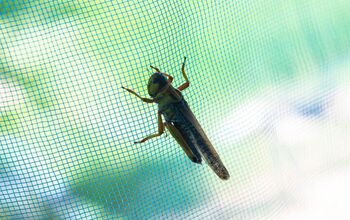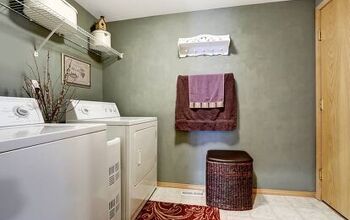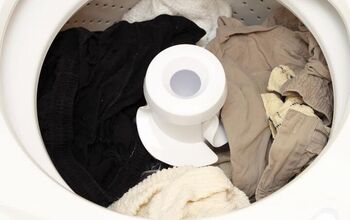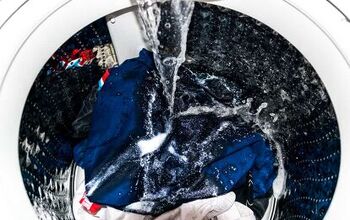Kenmore Washer Model 110 Won't Spin? (Fix It Now!)

Your washing machine may be one of the most useful and most often used appliances in your home. When your washing machine stops working, this can halt everyday necessities like clean clothes or bath towels. If your washing machine stops spinning, it’s best to address the problem quickly, so other issues don’t arise.
If your Kenmore Washer Model 110 isn’t spinning, there could be a variety of reasons why. The most common reasons are a broken drive belt or a defective door latch. It could also be a faulty motor control board or drive motor, or there could be a damaged stator or rotor.
Do You Need Appliance Repair Services?
Get free, zero-commitment quotes from pro contractors near you.

Five Common Reasons Your Kenmore Washer Model 110 Won’t Spin
Kenmore washers are popular among consumers because they are typically reliable machines. However, like most appliances, they can sometimes have issues. Below are the five most common reasons your Kenmore washer model 110 won’t spin.
Note: Always exercise caution when working with electrical components. Ensure you turn off the washer and unplug it before starting any troubleshooting.
1. A Broken Drive Belt
If your washer won’t spin, inspect the drive belt to determine if it is broken or loose on the pulleys. If it is, you’ll need to replace the drive belt.
2. A Defective Door Latch
The door latch on the washer secures the door shut when it’s operating. When you shut the door, the washer can begin operating. If the washer door doesn’t latch shut, the door switch will prevent the washer from working.
If there is a defective or broken latch, the washer will not be able to spin or start. The door latch can fail mechanically or electrically. Therefore, if your washer won’t start, it’s a good idea to inspect the door latch for damage.
If the latch has damage and doesn’t close properly, replace it. But, if you think the door latch has electrical issues, use a multimeter to test for continuity. If one of the switches doesn’t have continuity when activated, replace the switch.
You can buy a new latch on Amazon for about $70 and replace it yourself. However, if you prefer to have a professional replace the latch, you could pay between $110 to $200.
3. A Defective Motor Control Board
The motor control board provides power to the washing machine’s motor. If the motor control board has defects, the washer may not function properly.
First, check the control board for worn-out components. To determine if you have a broken control board, check that it provides power to the motor. If the control board has power, but it’s not providing power to the motor, replace it.
The average cost to replace a control board is about $200, but it could range from $100 to $375.
4. A Damaged Stator or Rotor
The rotor and stator interact to create a strong electromagnetic field, causing the tub to rotate in either direction. If there are damaged rotor magnets or a defective rotor, the washer will not spin. Inspect the rotor for any defects or damage; if you notice any, replace it.
Also, check the windings on the stator for damage. If they are, the washer will not spin or agitate. If the windings on the stator have defects, replace them. Rotors and stators are on the more expensive side, running about $175 to $200 per part.
5. A Defective Drive Motor
If defective, the drive motor can also cause the washer not to spin. However, this is rarely the cause of the washer not spinning. Before you replace the drive motor, check for more common issues.
If you have checked that other components are working properly, consider replacing the drive motor. First, ensure that the drive motor is receiving power. If the drive motor doesn’t hum or is noisy or doesn’t turn on its own, replace it.
Depending on where you order from, Kenmore drive motors can cost as much as $200 to replace. It’s always best to weigh your options of replacing a part yourself or hiring a professional to do so. If you’re comfortable with appliance repairs, it may save you money to purchase the product and replace it yourself.
Other Reasons a Kenmore 110 Washer Won’t Spin
Before spending money on a professional repair, determine if these issues are why your Kenmore 110 washer won’t spin.
6. A Failed Motor Coupling
If your washer doesn’t spin, the motor coupling might be failing. The motor coupling connects the motor to the washing machine transmission. If you have an overloaded washer, the motor coupling will fail in order to protect the motor and the transmission.
The motor coupling can also fail due to normal wear. To determine if the issue is a broken motor coupling, inspect it. If you find any damage, replace the part.
7. A Broken Clutch
If there is a broken washing machine clutch, it can also cause the machine to stop spinning. The clutch assembly connects the transmission and the inner tub. This helps the tub to work its way up to the proper spin speed gradually.
If the clutch is worn out, this could prevent the tub from spinning. If you can’t repair the clutch, replace it.
8. A Worn-Out Transmission
A worn-out or defective transmission could be to blame if the washing machine is not spinning. Gears in the transmission can fail, causing the washer not to spin. This is not typically an issue, so before replacing the transmission, check for other commonly defective parts.
9. A Defective Drive Pulley
If there is a faulty drive pulley, the washing machine will not spin. The drive pulley connects to the wash drum. It works with the drive belt and motor to rotate the drum.
A worn drive pulley can cause the drive belt to slip off, preventing the washer from spinning. To determine if this is the case, remove the drive pulley and inspect it. If you notice defects in the drive pulley, replace it.
How to Fix Clothes Not Spinning Dry In Washing Machine
If you find that your clothes are still wet after your washer’s spin cycle, the machine may not be spinning properly.
Perform the following steps to resolve the issue.
Step 1: Lift the Lid During the Spin Cycle
Lift the washing machine lid during the spin cycle to determine if it is spinning. If it isn’t, there might be a damaged motor coupler. You will need to replace the motor coupler.
Step 2: Check That the Load Is Balanced
If the tub is spinning, check that the load is balanced. If you are sure that there’s even distribution, but your clothes are still soaking wet, there’s a problem. You may have a damaged motor pulley, tub bearing, belt, or need to replace the clutch.
Step 3: Make Sure That the Drain Hose Isn’t Kinked
Make sure you don’t have a kinked drain hose. Then, check the tab on the lid and ensure that it strikes the lid switch. Otherwise, the washer may stop during the middle of the drain cycle, causing the clothes to remain wet.
Press and release the lid switch. If it doesn’t click each time you do this, it is most likely broken. Remove the switch, test it, and replace it if necessary.
Step 4: Check the Water Pump
If your clothes are still completely wet, there could be a clogged or broken water pump. Check that there isn’t a small piece of clothing potentially blocking the pump. If everything looks clear, there could be broken controls, and it’s advisable to call an appliance specialist.
How to Fix Washer Filling but Not Agitating
If your washing machine fills but does not agitate, the problem is likely a faulty switch or broken belt. There could also be a problem with the motor.
To diagnose the problem, follow the steps below.
Note: Direct-drive washing machines do not have belts.
Step 1: Check the Washing Machine’s Spin Cycle
If the washing machine doesn’t agitate, check the spin cycle. First, if the spin cycle works, the motor is operating, and the belt is fine. However, if the spin cycle isn’t working, there could be a broken or loose belt, and you should replace it.
Step 2: Check the Lid Switch
Check the lid switch if the washer fills but does not agitate. Check the switch on the washing machine lid and the tab on the lid that strikes the switch. If the plastic tab is broken, it will halt during certain cycles.
Press and release the switch. If it does not click each time you do this, it is probably broken. Remove the switch and replace it if needed.
Step 3: Check the Agitator Solenoid
After trying the measures above, if the washer still isn’t spinning, there may be a problem with the controls. There could be a broken agitator solenoid. Contact an appliance professional to resolve the issue.
Do You Need Appliance Repair Services?
Get free, zero-commitment quotes from pro contractors near you.

Related Questions
How often should I clean my washer?
You should clean your washing machine about once a month to maintain a clean washing machine and fight any odors. To start the cleaning process, use an all-purpose cleaner and wipe down the inside of the washer. Also, wipe the seals around the door of the machine. If you have a top-loading machine, remove any debris from any filters or drains around the seal. Alternatively, if you have a front-loading washer, identify the drain filter, shake it over the trash, and rinse well. If you notice any unpleasant odors in your machine or on your clean clothes, try a washing machine cleaner. Follow the directions on the package. Your washer may have a cleaning cycle, but vinegar and hot water should remove any odor if it doesn’t.
What is the average cost of a new washer?
Washing machines can cost anywhere from $250 to $2,050. The average top-load washer has a capacity of three cubic feet, three temperatures, multiple cycles, and a plastic tub. This will cost between $275 to $450. Front-loading washers start at about $500 and are usually about $300 more than a similar top-loading washer. A high-end front-loading washer with a stainless steel tub, electronic controls, and several cycles will cost about $1000.If you prefer a compact washer, they can run about $200 for a portable model. Front-loading, stainless steel, energy-efficient models can run about $2,050. The model features you prefer ultimately determine how much the washer will cost.
Related Articles

Stacy Randall is a wife, mother, and freelance writer from NOLA that has always had a love for DIY projects, home organization, and making spaces beautiful. Together with her husband, she has been spending the last several years lovingly renovating her grandparent's former home, making it their own and learning a lot about life along the way.
More by Stacy Randall



























